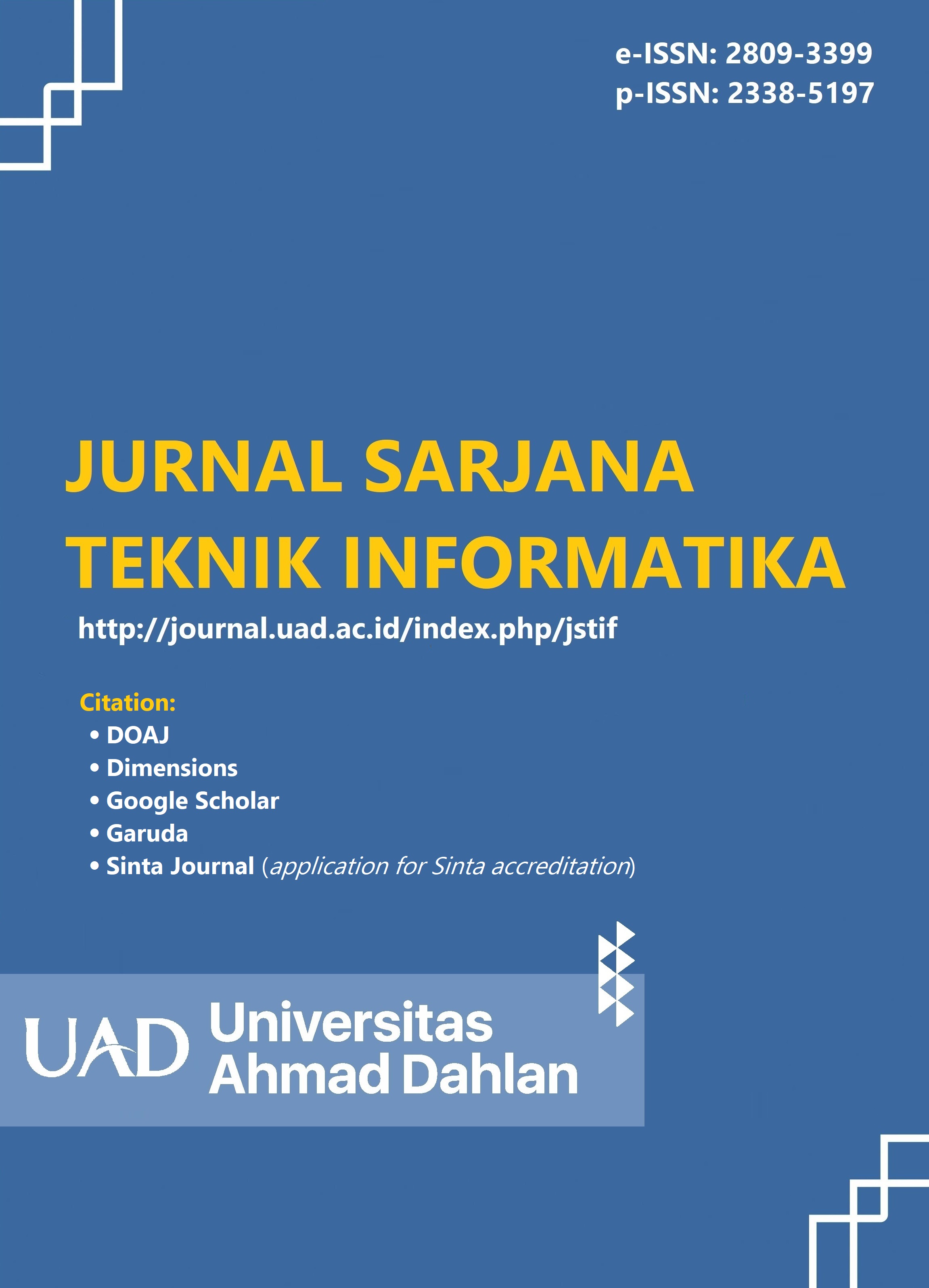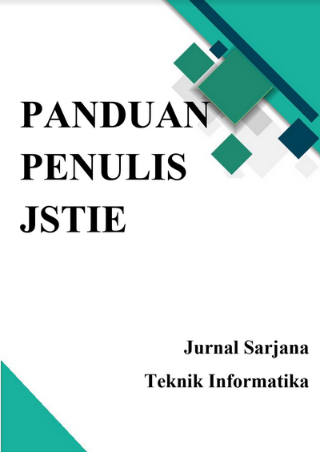Sistem Informasi Geografis Pemetaan Dampak Tsunami di Kota Pangandaran Berbasis Web
DOI:
https://doi.org/10.12928/jstie.v13i1.29183Keywords:
Sistem Informasi Geografis, SIG, Tsunami, WebAbstract
Pemahaman rendah masyarakat terkait mitigasi bencana alam akan sangat berpotensi mengakibatkan jumlah korban jiwa dengan jumlah yang tinggi. Pemerintah memiliki peran untuk memberikan edukasi terkait bencana alam melalui pemasangan rambu bahaya seperti tanda arah evaluasi, banner peta ancaman bencana, dan pemasangan alarm bencada. Upaya pemerintah terkait sosialisasi dan mitigasi bencana dirasa belum efektif akibat penolakan dari masyarakat yang merasa informasi bencana terlalu menakutkan. Penelitian ini bertujuan menghasilkan sistem informasi geografis untuk pemetaan dampak bencana alam tsunami di wilayah kota Pangandaran. Pelaksanaan penelitian ini akan menggunakan metode Waterfall yang terdiri dari tahap requirement analysis, design, development, testing, dan maintenance. Penelitian ini telah berhasil membangun sistem informasi geografis yang memvisualisasi atribut distribusi spasial potensi acaman bencana alam tsunami di kota Pangandaran melalui penerapan representasi peta. Hasil pengujian fungsional dengan black box test mendapatkan tingkat kesesuaian 100%. Hasil pengujian disimpulkan bahwa sistem informasi dapat digunakan dan diterima secara positif.
References
[1] I. Kurniasih, A. Nurhayati, L. P. Dewanti, and A. Rizal, “Marine Tourism Potential in Pangandaran Regency,” Jurnal Perikanan dan Kelautan, vol. 10, no. 1, p. 8, Sep. 2020, doi: 10.33512/jpk.v10i1.8011.
[2] Arif Baswantara et al., “Kolaborasi Bersama Masyarakat dalam Upaya Revitalisasi Kawasan Mangrove Bulaksetra, Pangandaran, Jawa Barat,” Community Dev J, vol. 4, no. 6, pp. 13644–13652, Oct. 2023.
[3] G. M. Warsito, M. Budiharsana, and S. Burns, “Identifying the Weak Foundation of Public Health Resilience forNational Disaster Policy in Indonesia’s Mid-term DevelopmentAgenda 2015–2019: A Policy Content Analysis,” Kesmas: National Public Health Journal, vol. 15, no. 2, May 2020, doi: 10.21109/kesmas.v15i2.3285.
[4] Puput Alviani, Buku Pintar Penanggulangan Tsunami, 1st ed., vol. 1. Yogyakarta: DIVA Press, 2021.
[5] Hasan Kurniawan, “Peringatan 15 Tahun Silent Tsunami Pangandaran yang Menewaskan 650 Orang,” SindoNews.
[6] Mitra Djamal et al., “Rute Evakuasi Tsunami di Pantai Batu Karas Pangandaran,” Rekacipta ITB.
[7] Jumadi, Danardono, and Vidya N Fikriyah, Sistem Informasi Geografis dan Aplikasinya di Bidang Geografi, 1st ed., vol. 1. Muhammadiyah University Press, 2021.
[8] Z. Zulfauzi, S. Satrianansyah, and D. Nurdiansyah, “Sistem Informasi Geografis Pemetaan Daerah Rawan Bencana di Kabupaten Musi Rawas,” JUTIM (Jurnal Teknik Informatika Musirawas), vol. 7, no. 1, pp. 62–70, Jun. 2022, doi: 10.32767/jutim.v7i1.1642.
[9] B. M. Adji et al., “Pembuatan Peta Resiko Bencana di Desa Kubang Tangah Kota Sawahlunto dengan Metode Arc Toolbox,” Jurnal Talenta Sipil, vol. 7, no. 1, p. 157, Feb. 2024, doi: 10.33087/talentasipil.v7i1.398.
[10] Trisya Septiana, Farel Alfa Syahri Ramadhan, Mona Arif Muda, and Alda Larasati, “Sistem Informasi Geografis dalam Pemetaan Risiko Bencana di Sekitar Selat Sunda,” Jurnal Inovasi Pembangunan, vol. 12, no. 2, pp. 141–152, Aug. 2024.
[11] Sari Mulyaningsih and Tedy Setiadi, “Sistem Informasi Geografis Pemetaan Daerah Rawan Tanah Longsor di Kabupaten Gunung Kidul Berbasis Web,” Jurnal Sarjana Teknik Informatika, vol. 2, no. 1, pp. 276–283, Feb. 2013.
[12] T. W. Wibowo, D. Mardiatno, and S. Sunarto, “Pemetaan Risiko Tsunami terhadap Bangunan secara Kuantitatif,” Majalah Geografi Indonesia, vol. 31, no. 2, p. 68, Dec. 2017, doi: 10.22146/mgi.28044.
[13] P. Subardjo and R. Ario, “Uji Kerawanan Terhadap Tsunami Dengan Sistem Informasi Geografis (SIG) Di Pesisir Kecamatan Kretek, Kabupaten Bantul, Yogyakarta,” Jurnal Kelautan Tropis, vol. 18, no. 2, May 2016, doi: 10.14710/jkt.v18i2.519.
[14] H. T. Fachri, Yakub Malik, and Hendro Murtianto, “Pemetaan Tingkat Bahaya Bencana Tsunami Menggunakan Sistem Informasi Geografis di Pesisir Kota Bengkulu,” Jurnal Pendidikan Geografi Undiksha, vol. 10, no. 2, pp. 166–178, Sep. 2022, doi: 10.23887/jjpg.v10i2.43541.
[15] Ramadhani Sarah Alicya Bilqis, Moehammad Awaluddin, and Firman Hadi, “Analisis Bahaya Bencana Tsunami di Kota Cilegon Menggunakan Sistem Informasi Geografis,” Jurnal Geodesi Undip, vol. 13, no. 1, pp. 58–64, Aug. 2024.
Downloads
Published
Issue
Section
License
Copyright (c) 2025 Sendy Apriatna, Ika Arfiani

This work is licensed under a Creative Commons Attribution-ShareAlike 4.0 International License.
License and Copyright Agreement
In submitting the manuscript to the journal, the authors certify that:
- They are authorized by their co-authors to enter into these arrangements.
- The work described has not been formally published before, except in the form of an abstract or as part of a published lecture, review, thesis, or overlay journal. Please also carefully read Journal Posting Your Article Policy.
- The work is not under consideration for publication elsewhere.
- The work has been approved by all the author(s) and by the responsible authorities – tacitly or explicitly – of the institutes where the work has been carried out.
- They secure the right to reproduce any material that has already been published or copyrighted elsewhere.
- They agree to the following license and copyright agreement.
Copyright
Authors who publish with Jurnal Sarjana Teknik Informatika agree to the following terms:
- Authors retain copyright and grant the journal right of first publication with the work simultaneously licensed under a Creative Commons Attribution License (CC BY-SA 4.0) that allows others to share the work with an acknowledgement of the work's authorship and initial publication in this journal.
- Authors are able to enter into separate, additional contractual arrangements for the non-exclusive distribution of the journal's published version of the work (e.g., post it to an institutional repository or publish it in a book), with an acknowledgement of its initial publication in this journal.
- Authors are permitted and encouraged to post their work online (e.g., in institutional repositories or on their website) prior to and during the submission process, as it can lead to productive exchanges, as well as earlier and greater citation of published work.








